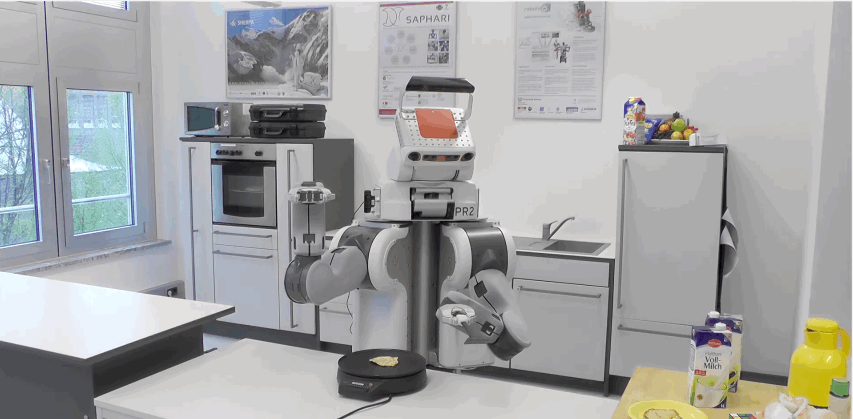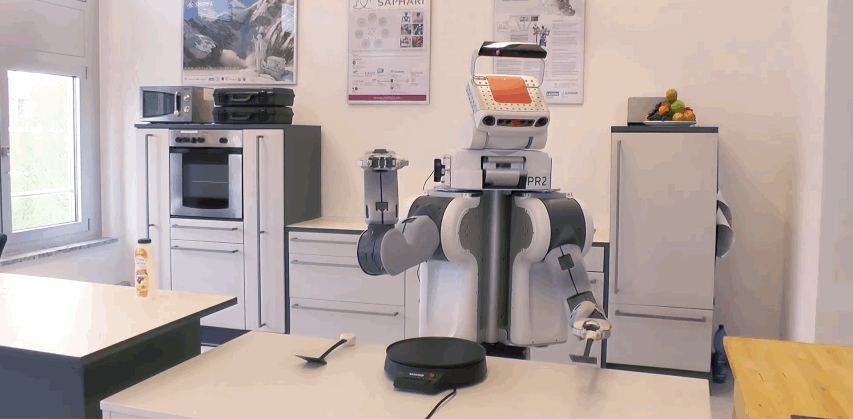
As a normal human with the average brain cells found in a being of my species and age, I find it hard to get pancakes just right. There’s a fine and delicate art to them that requires a ton of information.
But I don’t need someone to tell me how to hold a spatula.

That’s the thing with robots! They’re able to compute and execute highly complex tasks, but the information that they learn must be granular and input comprehensively. It’s not enough just to teach a robot how to cook pancakes; it must know how to find a spatula, hold it, pour a precise amount of batter, flip it at the right time with the right technique, and so forth.
It’s tricky. Just check out the robot attempting spatula orientation and manipulation in the video below:
That’s why scientists at RoboHow are breaking down the complex actions of certain behaviors, so in the future, people will simply be able to tell a robot what to do. So, that involves teaching them — largely with instructions culled from WikiHow. Once a robot learns information — say, the exact angle you must grip a spatula to hold it — its knowledge gets added to the Open Ease database, which creates a general knowledge bank for other robots.

The level of programming involved shows how many different pieces of implicit direction the human mind can calculate and execute at any time. But scientists are chasing after these goals in hopes that better human-robot interaction will be possible over time.
Get the TNW newsletter
Get the most important tech news in your inbox each week.





